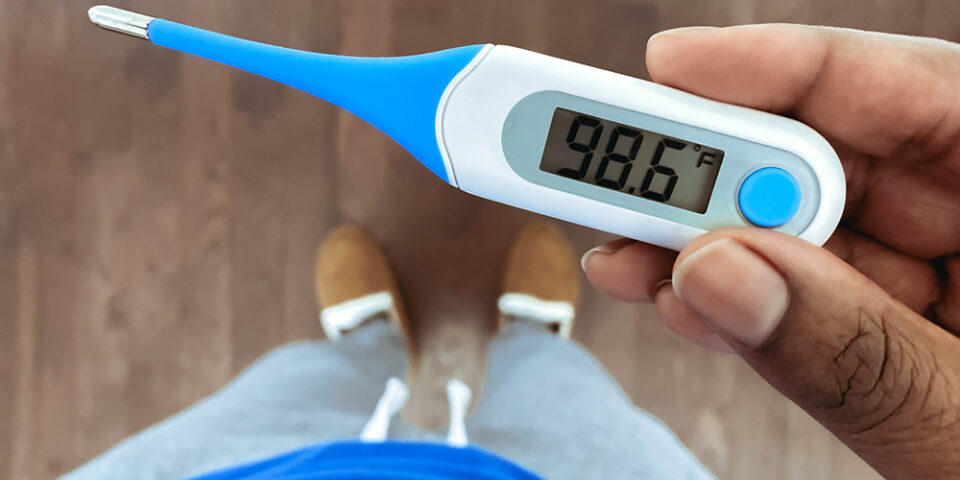What is the best way to take your temperature?
For most of us, one of our earliest memories may be of an adult taking our temperature when we were sick. Whether it was a palm to the forehead, holding a glass, metal or plastic thermometer under the tongue, or the less than comfortable feeling of a thermometer under the arm, getting an accurate read on your body temperature is one of the best ways to catch early signs of sickness.
Are at-home thermometers accurate? What is the best way to take your temperature? Katie Whiten, PA, explained what you need to know.
Is an at-home thermometer accurate?
“Oral thermometers, the ones you hold under your tongue, are generally accurate … as long as you keep your mouth closed and stay as still as possible,” said Whiten.
The problem comes when dealing with children, who often struggle to hold still even at the best of times and who may not be willing to cooperate with the discomfort of being poked under the tongue. Adults may also not realize how much they’re moving and that motion can lead to the temperature reading a degree or two lower than it really is.
What should your temperature be? How can you know when your temperature is too high?
“A normal healthy temperature can range from 97 degrees Fahrenheit to 99 degrees,” said Whiten. “That range can differ with age and by the individual. Infants and babies have a higher metabolic rate than adults, so they may run warmer to the touch when bundled up while adults still feel cool.”
Whiten noted that generally, someone is running a fever when their thermometer reads 100.4 degrees or higher.
Is a healthy temperature different for adults than for children? What about babies?
“With children, it isn’t so much that they have a different baseline temperature that represents health, but that low-grade fevers may more commonly come and go,” said Whiten. “Often, a baby or small child with a fever can be settled with a lukewarm bath or time snuggling with a family member.”
Since fevers are often one of the first signs of a viral or bacterial infection and illness in children, especially those too young to speak, it’s important for their family to watch and see if the fever comes down.
What are the different types of thermometers? Which type is best to use at home?
“Thermometers may be oral, rectal, axillary, or be designed to measure temperature on your forehead,” said Whiten. “Oral thermometers are most often recommended for at-home use. Rectal thermometers are inserted into the rectum and are most often used for infants and newborns who might wriggle or be unable to hold the oral thermometer under their tongue.”
Axillary thermometers are the kind placed under the armpit. Often, they will not be as accurate as oral or rectal temperature taking.
Can you treat a fever at home? How do you know when to see a doctor about a fever?
“Fevers can be treated at home with over-the-counter medications like Tylenol/acetaminophen, which can be given from 2 months of age or older,” said Whiten. “Make sure to follow the directions when it comes to dosage amount, and not to take too much for your age or body size.”
Lukewarm baths can help to reduce a newborn or infant’s fever. In many cases, though, fevers don’t require treatment at all and resolve on their own. If you don’t see any improvement in symptoms with at-home treatment, Whiten recommended making an appointment with your doctor.
If you or a loved one has a fever that doesn’t respond to medication or lasts more than three days, you should head to the urgent care or call your doctor. High fevers, those above 103 degrees Fahrenheit, are considered a potential emergency.
Finally, if someone has a fever alongside a rash, nausea or confusion and mental changes, head to the emergency room immediately, as these symptoms may be due to meningitis, which requires treatment as soon as possible.
Find the care you need, close to home
Our primary care physicians provide well visits and everyday care when you need it with compassion and expertise.
Find Primary Care Near You

